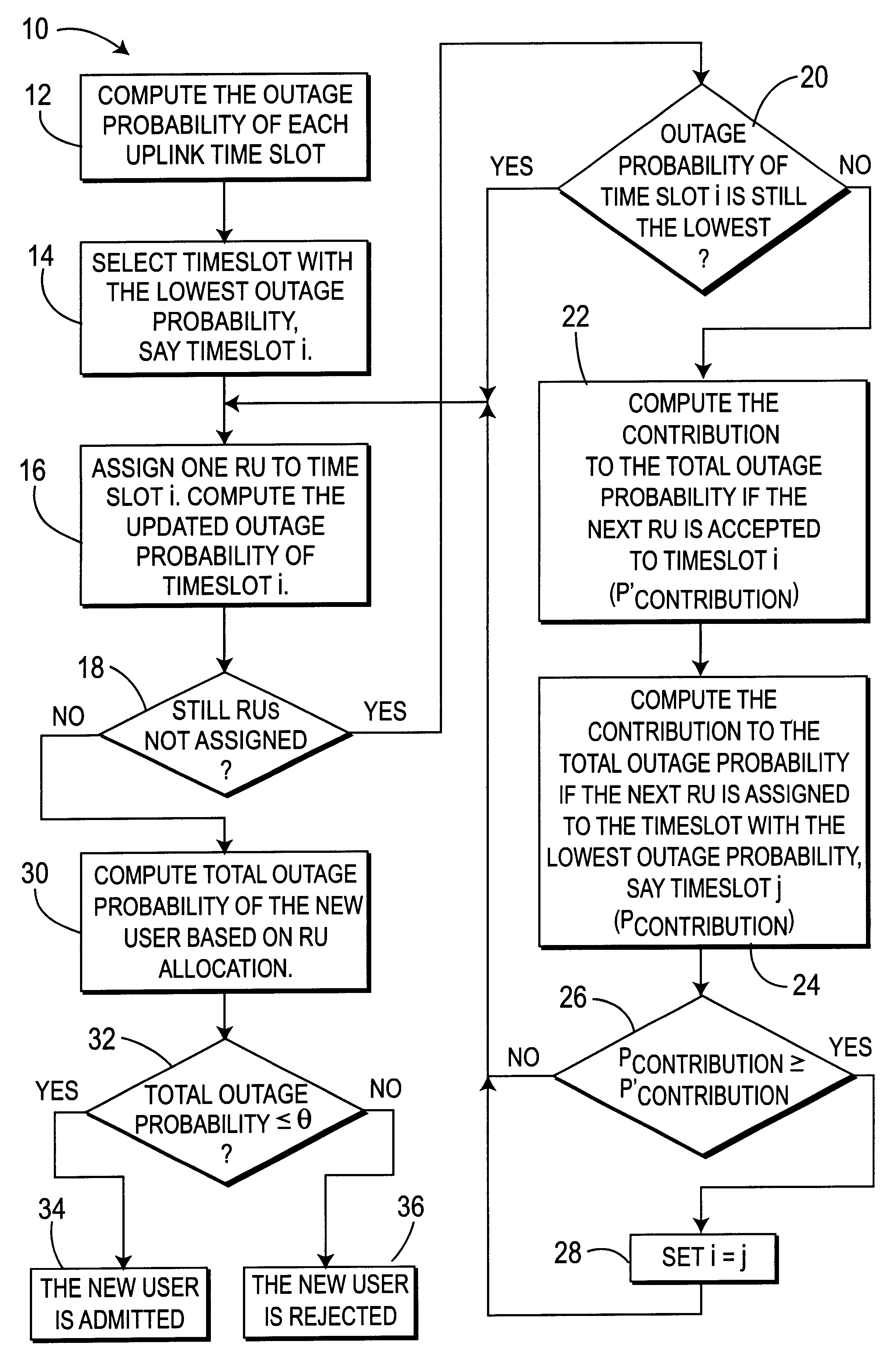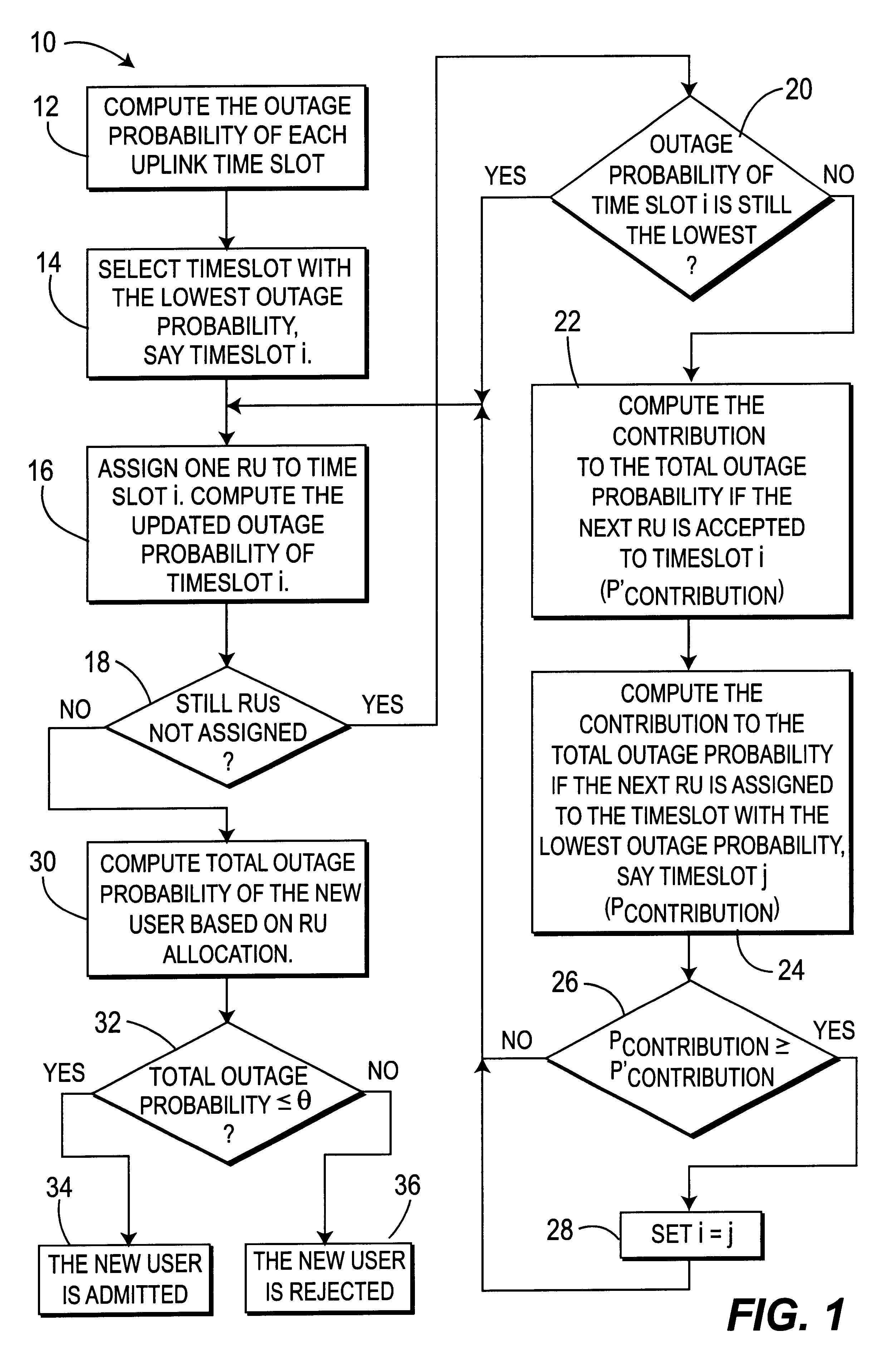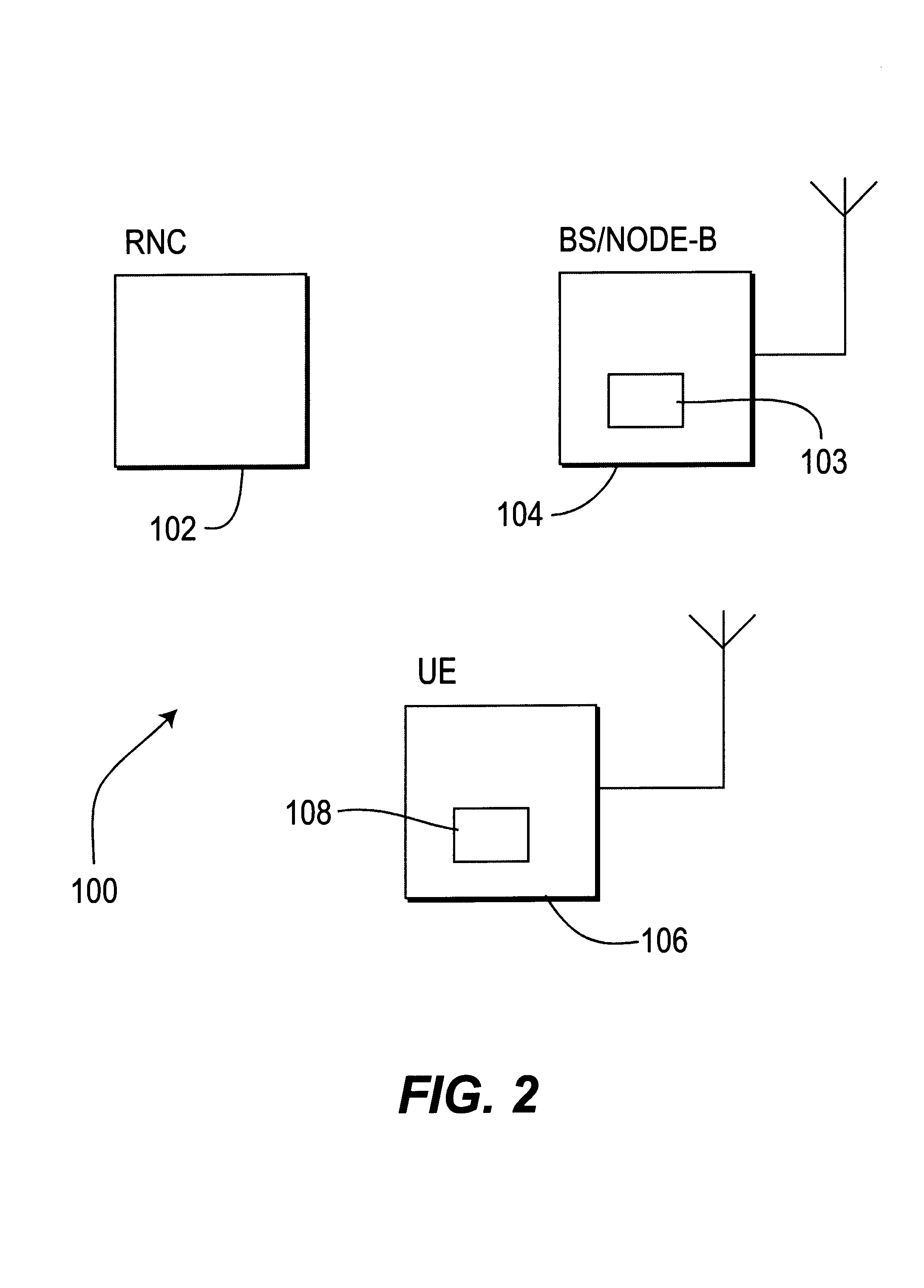Method and system for performing call admission control in the uplink for third generation wireless communication systems
a wireless communication system and call admission control technology, applied in the field of wireless communication, can solve the problems of not fixed the required sir of a user, the stability and capacity of the system, and the direct influence of the qos of mobile users, so as to avoid software and hardware implementation costs
- Summary
- Abstract
- Description
- Claims
- Application Information
AI Technical Summary
Benefits of technology
Problems solved by technology
Method used
Image
Examples
Embodiment Construction
)
In accordance with the present invention, call admission control is performed in WCDMA-TDD systems (where users can use multiple timeslots) while taking into account the fact that each user's required signal to interference ratio (SIR) is a random variable. Resource allocation is optimized so as to yield the lowest total outage probability (Pout−total) for a new user and to ensure Pout−total is below a predetermined value.
The present invention is preferably implemented using the following assumptions. First, as specified by the Third Generation Partnership Project (3GPP) standards, each frame is divided into 15 timeslots. Second, the chip rate of a WCDMA-TDD system is 3.84 Mcps making the equivalent chip rate in one timeslot 256 kcps (i.e. 3.84 Mcps / 15=256 kcps). Third, a multi-user detection (MUD) receiver is used at the base station (BS).
In each timeslot, Orthogonal Variable Spreading Factor (OVSF) codes are used for channelization codes. The spreading factor of a channelization ...
PUM
 Login to View More
Login to View More Abstract
Description
Claims
Application Information
 Login to View More
Login to View More - R&D
- Intellectual Property
- Life Sciences
- Materials
- Tech Scout
- Unparalleled Data Quality
- Higher Quality Content
- 60% Fewer Hallucinations
Browse by: Latest US Patents, China's latest patents, Technical Efficacy Thesaurus, Application Domain, Technology Topic, Popular Technical Reports.
© 2025 PatSnap. All rights reserved.Legal|Privacy policy|Modern Slavery Act Transparency Statement|Sitemap|About US| Contact US: help@patsnap.com



